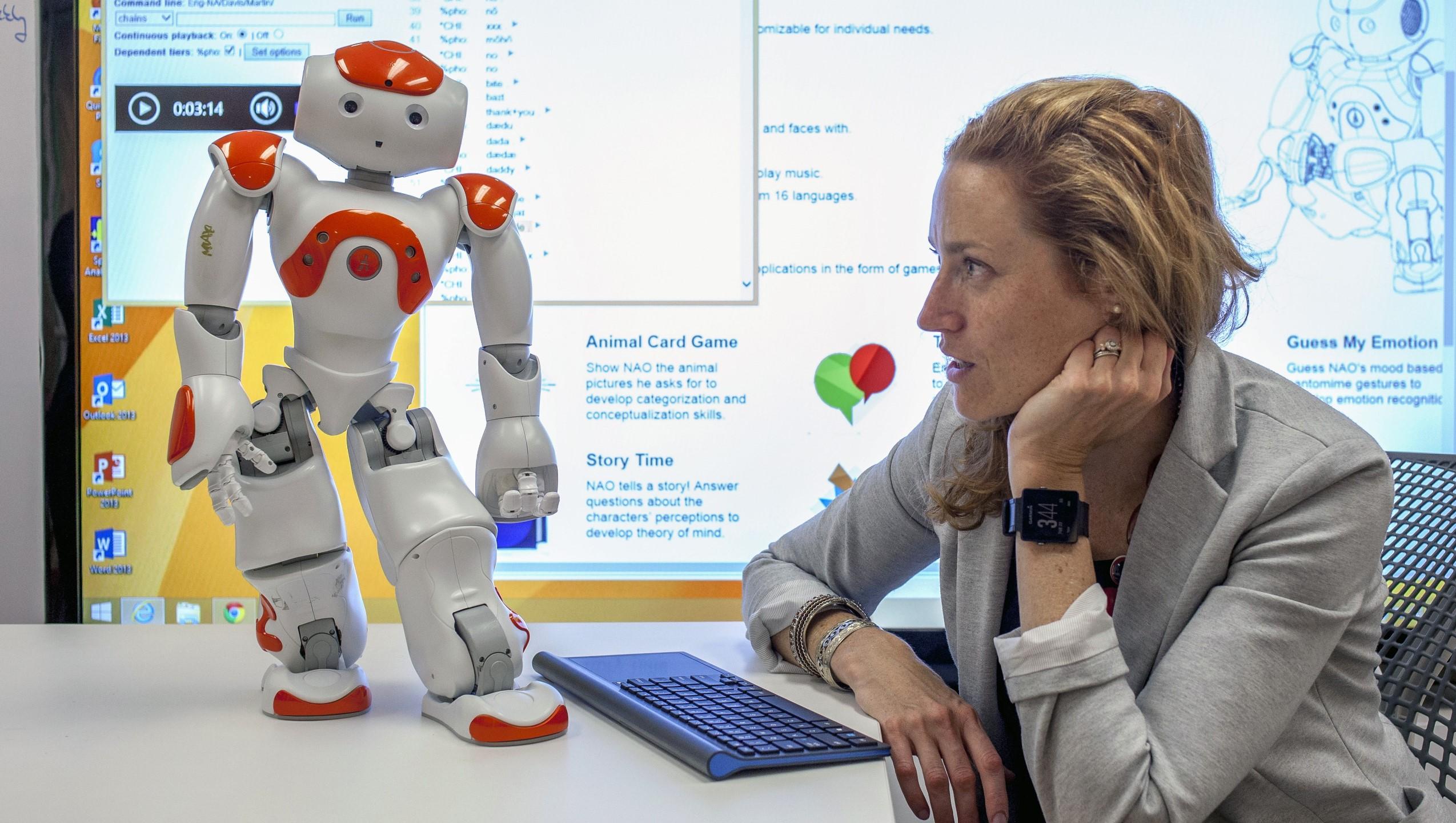By Noushin Ziafati
A team of researchers at Ryerson found that children with autism spectrum disorder (ASD) easily interact with small humanoid robot NAO.
Professors Stephanie Walsh Matthews and Jamin Pelkey from the Department of Languages, Literatures and Cultures are working with Ryerson students and children who have ASD, alongside their therapists, to analyze the children’s interactions with the robot over time.
The team is gathering information on how prepubescent children with autism interact with robots and whether this affects their speech or language. It found that children with autism are willing to interact with robots and do so with great ease.
“So we’ve said, let’s leverage this willingness to interact to see if we can get more information,” Walsh Matthews, inventor of the study said. “And we have. So what we have noticed is that the kids are producing more speech, there’s more language when they are interacting with robots.”
Each child spends one hour a week with the robot in a classroom, for six weeks consecutively.
The robot sits or stands on a table and a child sits in a chair in front of it, accompanied by their main therapist. The robot and the child play card games, sing songs and poems and take quizzes.
In the same room, a student from the team will sit and observe the child’s behaviour, while someone called a “robot wrangler” manages the robot’s behaviour on a computer. A lot of the activities are automated, but the robot wrangler scripts on the spot to transition in and out of activities with ease.
“It’s all just play. Sometimes the robot will sit and tell a story, or sometimes the robot sits down and listens to the child’s story. And then they say goodbye to one another, and it’s actually very cute,” Walsh Matthews said.
The child is told they are playing with “an object that’s been animated by a program,” and that it is not real but a “humanoid machine” with a transposed identity onto it.
From the first wave of their study, the team found that when the robots malfunctioned, a small number of children showed an increase in utterances and sometimes took on the speaking patterns of their therapist, something the team had not seen before.
“So suddenly, [a few of the children] were using words they usually didn’t use, they were using intonations and swings in their intonations, and rightly so, so it’s not just pure mimicry, they’re actually using all of these language phenomena accurately according to the circumstance,” Walsh Matthews said.
This discovery led to the second wave of the team’s study. It’s now working on designing programs for the NAO robot to make mistakes on purpose. With this development, it can look further into how children react to these malfunctions and whether they cause more changes in their speech.
The NAO robot is designed by French robotics company Aldebaran Robotics and has been used worldwide by teachers and therapists to study interactions in children with autism.
“So there’s a pre-design in the NAO to be a great tool for interaction with children with autism,” Walsh Matthews said.
The NAO research study at Ryerson began in 2014.











Leave a Reply